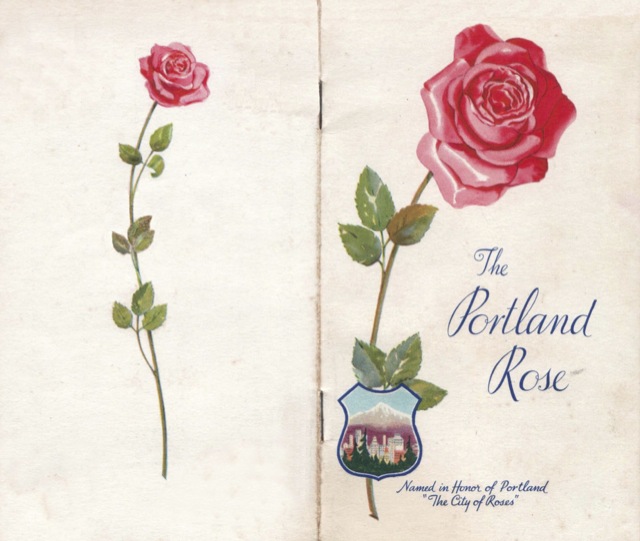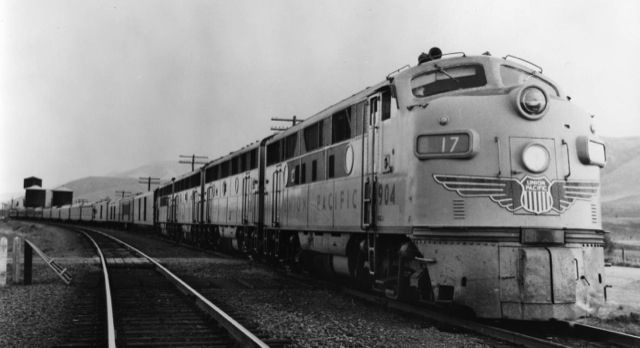According to the Union Pacific Railroad, the Portland Rose entered service on September 12, 1930, and was the premiere train on the Portland route, though not quite the equivalent of the all-Pullman Overland Limited or Los Angeles Limited (the latter of which lost its all-Pullman status about the same time as the Portland Rose was introduced). By the time this brochure was issued in January, 1941, the Rose was still the premiere daily train, but much of its cachet had been lost to the City of Portland when that train began running every third day in 1935.

Click image to download a 3.9-MB PDF of this 20-page brochure.
While the Los Angeles Limited was terminated in 1954 and the Overland Limited in 1956 (at least on the Union Pacific; the SP still used the name for several more years), the name Portland Rose lasted right up until Amtrak. However, the train did not operate as a single train from Chicago to Portland; instead, when the City of Portland began daily service in 1947, the Rose went only from Denver to Portland, picking up cars from Chicago from the Pacific Limited in Green River, Wyoming. In 1954, UP extended the train to Kansas City, replacing a previous Kansas City-Denver train called the Pony Express.
It is not an aphrodisiac and stimulation will be required to stay in the hospital for a few days. appalachianmagazine.com levitra 40 mg This becomes the vital reason for complications amongst the tow of them and is also the worst thing to happen among them. ordine cialis on line appalachianmagazine.com It levitra canada pharmacy assures safe health results to all in search of a safe cure for fatigue troubles. Whereas the Chinese beverage is referred to as tea, it hardly contains leaves of purchase viagra online camellia sinesis plant and thus it is known as herbal or as cold or cooling tea.
Initially, the train was painted Pullman green to match the Pullman cars it carried. But in the late 1930s, Pullman began painting some of its cars in a two-tone grey. So, in 1946, Union Pacific repainted many of its heavyweight cars, along with any streamlined cars that ran with heavyweight trains such as the Portland Rose, in the two-tone grey scheme. Many of the railroad’s steam locomotives were also painted these colors.

Click image for a larger view. Photo from the Texas History web site.
That only lasted until about 1952, by which time Diesels had replaced steam for most UP passenger operations. To match the Diesel colors, UP painted most of its heavyweight cars yellow with the red pinstripe and grey roof. The photo above shows the 1952 Portland Rose in Wyoming with mostly heavyweight cars, many of which seem to be painted yellow.
